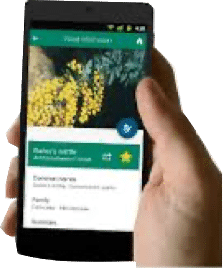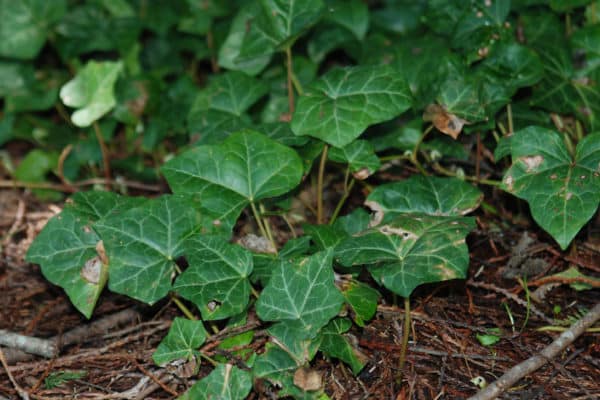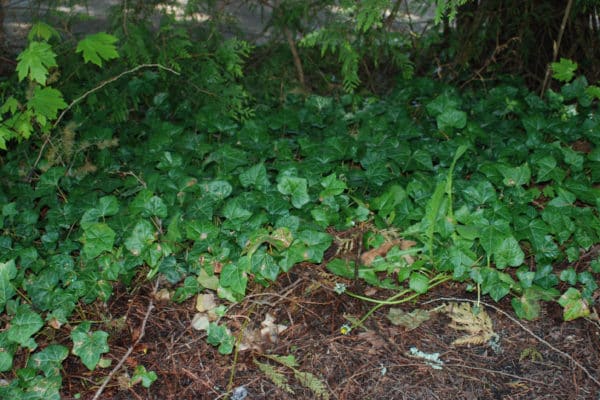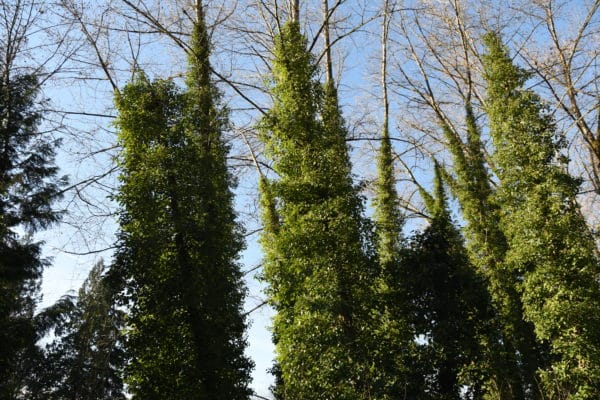English ivy
About This Species
English ivy (European ivy, Common ivy) was commonly planted to provide quick cover for walls and buildings, and as ground cover in commercial landscapes. It was intentionally introduced from it’s native range of Europe. It has since spread throughout rainforest understories where it can grow as a dense mat that suppresses native plants or climbing up trees, reducing their lifespan and leaving them more susceptible to wind damage. English ivy grows rapidly and needs very little light or water once it has established, and even grows during the winter. It reproduces through seed and vegetatively and its berries are preferred and spread by birds. There is another ivy species present in British Columbia that is difficult to distinguish from English ivy, Atlantic ivy (Helix hibernica).
How to Identify
English ivy is an evergreen vine that will be found growing as dense groundcover or climbing up trees.
Clusters of small white to yellow-green flowers bloom in late summer and early fall and are followed by clusters of black shiny fruit.
Leaves are star-shaped with 3-5 points, waxy and leathery. Leaves on the fruiting stems will be egg-shaped without points or lobes. Both sets of leaves can range from 5-10 cm long and 6-12 cm wide and can be a range of different colors: dark green, silver-green, yellow, white.
Take Action
Prevention is the best approach.
- English ivy Factsheet PDF
-
If you need advice about invasive species on your property or you are concerned about reported invasives in your local area, contact your local government or regional invasive species organization.

Plantwise
Learn about best practices
A few non-invasive alternatives to plant instead of English ivy include:
- Boston ivy (Parthenocissus tricuspidata)
- Deer fern (Blechnum spicant)
- Piggy-back plant (Tolmiea menziesii)
- Salal (Gaultheria shallon)
- Western honeysuckle (Lonicera ciliosa)
REPORT TO PROTECT BC’S BIODIVERSITY

Use the app
Observe and report to protect BC’s biodiversity

Report through this website
Use our form to tell us what you’re seeing and where.



















